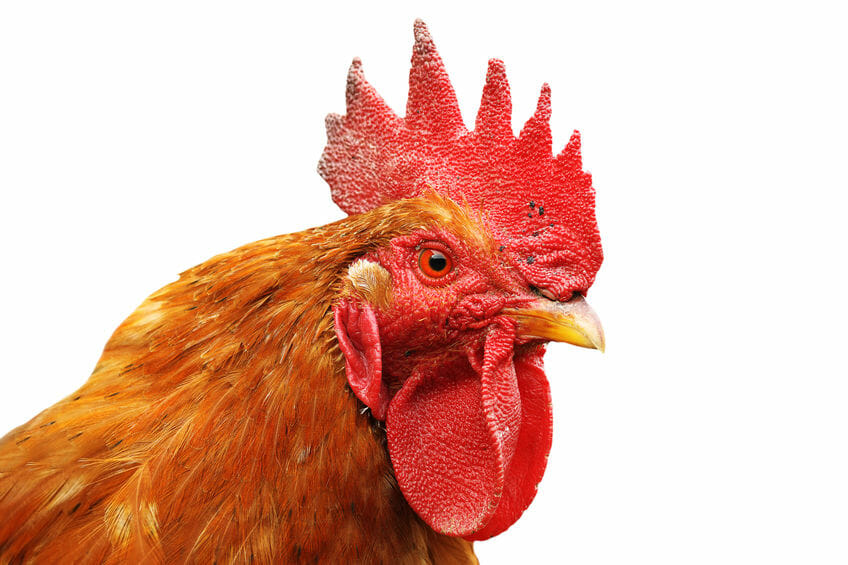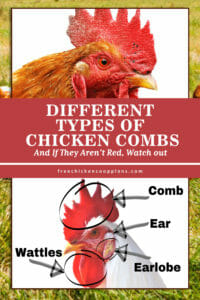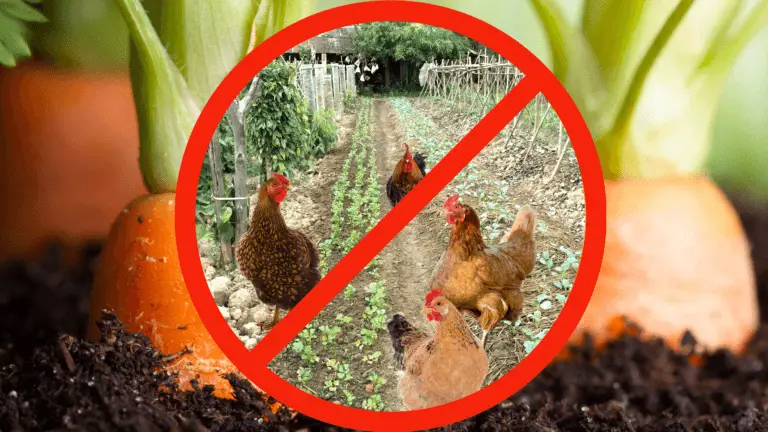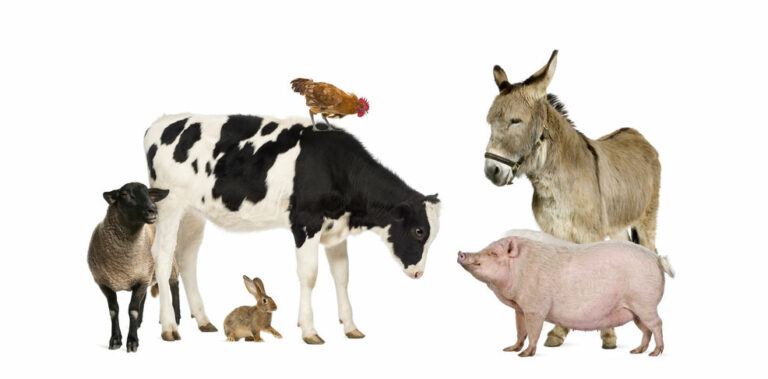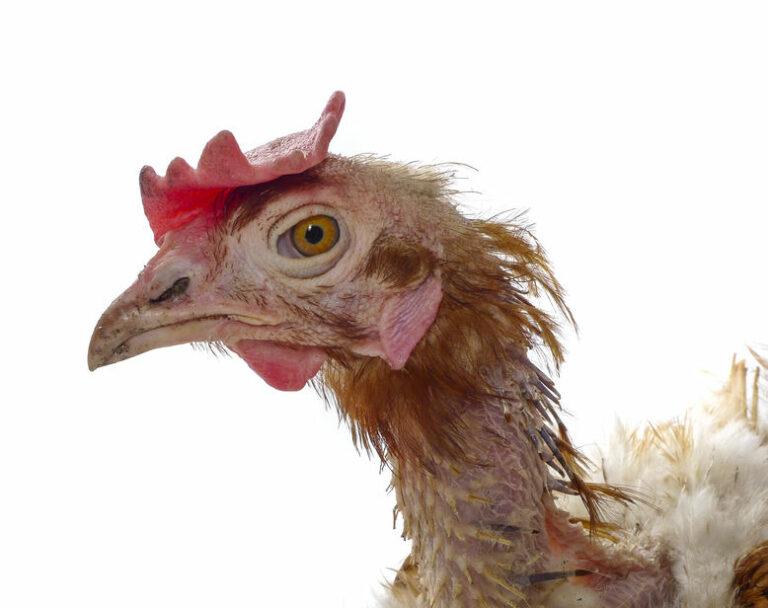Different Types Of Chicken Combs – And If They Aren’t Red, Watch out!
Everything you need to know about that “red flesh” on a chicken’s head!
If you look at a chicken, you’ll notice red flesh on their head as well as under their beak and jawline. There’s also a small flap of this red flesh on the side of the chicken’s head.
Why so much red flesh? What is all of that?
Well, it’s part of the chicken’s anatomy; the comb, wattle, and earlobe. Flaunting all that red isn’t a fashion statement in the chicken world.
We’re going to unpack and break down everything there is to know about these ruby red fleshy chicken adornments.

The Anatomy of a Chicken’s Head
A chicken’s head is pretty straightforward. You have the beak, feathers, eyes, and areas of red protruding flesh. These fleshy areas are the comb, wattles, and earlobes, all of which have a specific purpose.
What is a chicken comb?
The red flesh sitting on top of the chicken’s head is the ‘comb.’ Most chickens (male and female) have combs. Roosters have larger combs than hens and use them to attract the girls. Hens with more prominent combs are higher in pecking order within a flock.
You’re probably wondering, “What is a comb made of?”
The comb, wattle, and earlobe have layers of skin just like we do. The combs are made up of not only the various layers of skin but also collagen. A lot of chicken-parents notice that their chicken’s combs are floppy some days, and other days they are upright. Erect combs generally indicate that your chicken is warm or hot. Floppy combs indicate your chicken is content with the environmental temperature, or it’s sick. We’ll cover more on signs/symptoms to look for in chicken combs further down.
What are chicken wattles?
Great question because most people have never heard of these. Just below the beak and jawline are the chicken wattles (dangling red flesh.) For those of us who are up in age, we too have similar folds of skin hanging down under our chins! Turkeys are notorious for having prominent wattles.
Earlobes
Yes, chickens have ears and earlobes! The earlobe is a flap/fold of red skin on the side of their head. It looks similar to a fish gill. Just above the earlobe is the opening of the ear. A small tuft of feathers covers the ear opening for protection.
Purpose of Having Combs and Wattles
We finally get to the MEAT of the subject!
Everyone is dying to know why chickens have combs and wattles.
Simply put, combs and wattles are air-conditioners for chickens. No kidding!
The regular body temperature of a chicken runs about 106 degrees (F.) Add the sizzling temperatures of summer on top of that, and you have one HOT chicken. Chickens are unable to sweat like we do to cool off, so they resort to cooling off through a dense capillary system that runs through the comb and wattle.
The blood is cooled as it travels through the network of capillaries in the comb and wattle. On colder days, the comb appears more floppy because there’s no need for your chicken to switch on its cooling system. If you find that your chicken’s comb is floppy on an intensely hot day, something may be wrong with your chicken. It should otherwise be erect on hot days.
For information on foods which chickens can eat and not eat, read this article.
Different Types of Chicken Combs
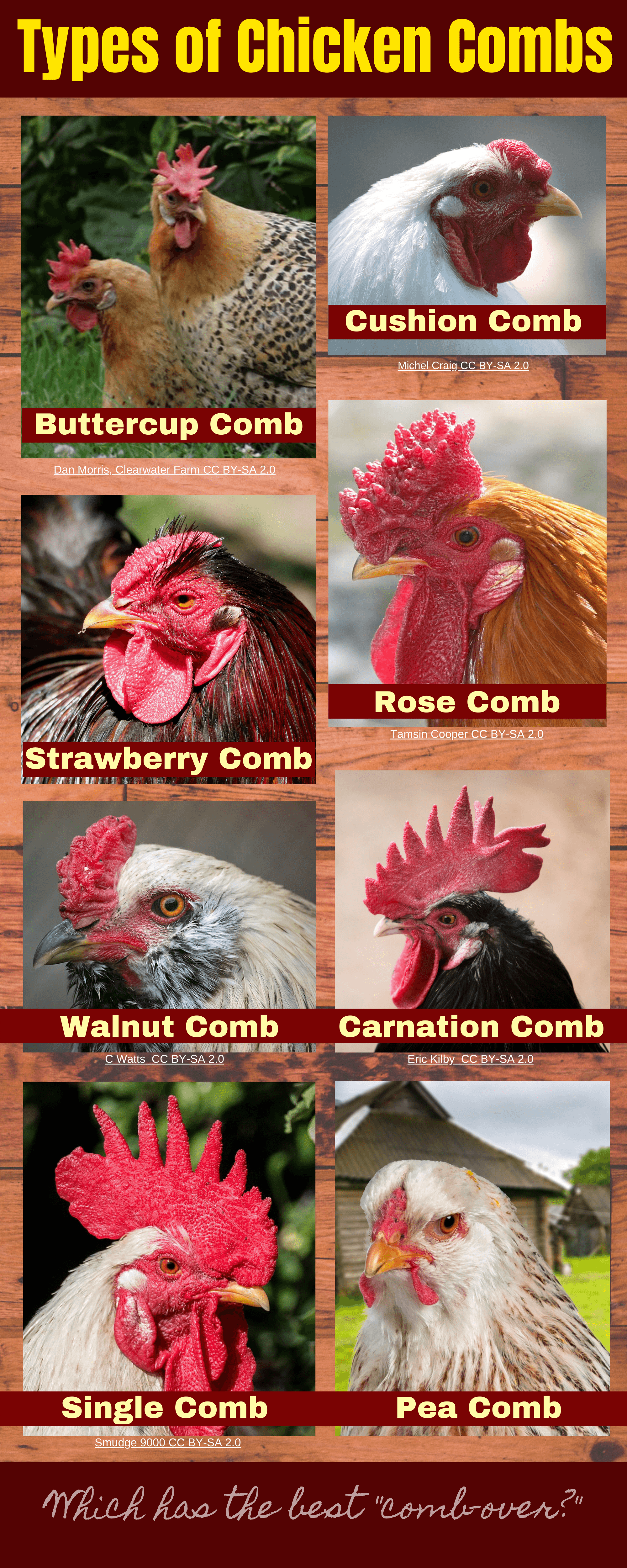
Chicken Comb Problems
Have you noticed when you take your cat or dog to the vet, the first thing they look at is the gums? Gums in dogs and cats are like combs in chickens. When disease, stress, or other dangerous conditions hit our chickens, the comb acts as a warning indicator. Changes in color, texture, and size are red flags.
Frostbite
Frostbite is a real concern for chicken-parents. Combs, wattles, and feet are very vulnerable to dangerously low temperatures (below 10 degrees (F.) Unfortunately, chickens have no insulation (feathers) in these areas.
What does frostbite on a chicken comb look like?
Degrees of Frostbite: Signs and Symptoms
1st Degree
- The area begins to become irritated as it begins to lose warmth.
2nd Degree
- The area begins to harden.
- Blisters
- Swelling
- Numbness
3rd Degree (the worst)
- The tissue has died, causing irreversible damage.
- Black
- Swollen
- Hard
How do you protect chicken’s combs from frostbite?
- Keep your chickens in an indoor heated area.
- Stressed or unhealthy chickens should never be allowed out in the cold because they are extremely vulnerable to frostbite.
- Ensure that all of your chickens have ample room to roost. This encourages huddling and is far better than a chicken being left alone on the floor/ground.
- As silly as it sounds, chicken hats are very beneficial in the winters. Other variations are found here.
Comb Cyanosis
WARNING: Don’t ignore blue/purple combs or wattles!
This type of discoloration in the comb/wattle tissue indicates something serious is going on with your chicken.
Other Potentially Serious Issues
Below are a few issues that require your attention in the event you notice any of these present in your chicken’s comb or wattle.
For information on setting up a coop for your chickens read our guide here.
Like this post? Pin it
Comb Pecking
It’s not uncommon for chickens to peck at each other’s combs at times as a way to establish a literal pecking order. But occasionally this can lead to an open wound and, once blood is visible, they’ll often keep pecking at it. If the victim is not removed from the flock, the others may peck it to death (no joke).
If you see this happening, remove the injured chicken from the others and apply a product to help the comb heal such as Peck No More which helps prevent bleeding and deters the other chickens from further pecking because they don’t like the taste.
Blu-Kote is an antiseptic spray that accomplishes the same purpose.
The Last “Cluck…”
We hope you have learned something about chicken combs. You’ll no longer look at the red fleshy parts on a chicken’s head the same as you once did!
Happy “chickening!”

